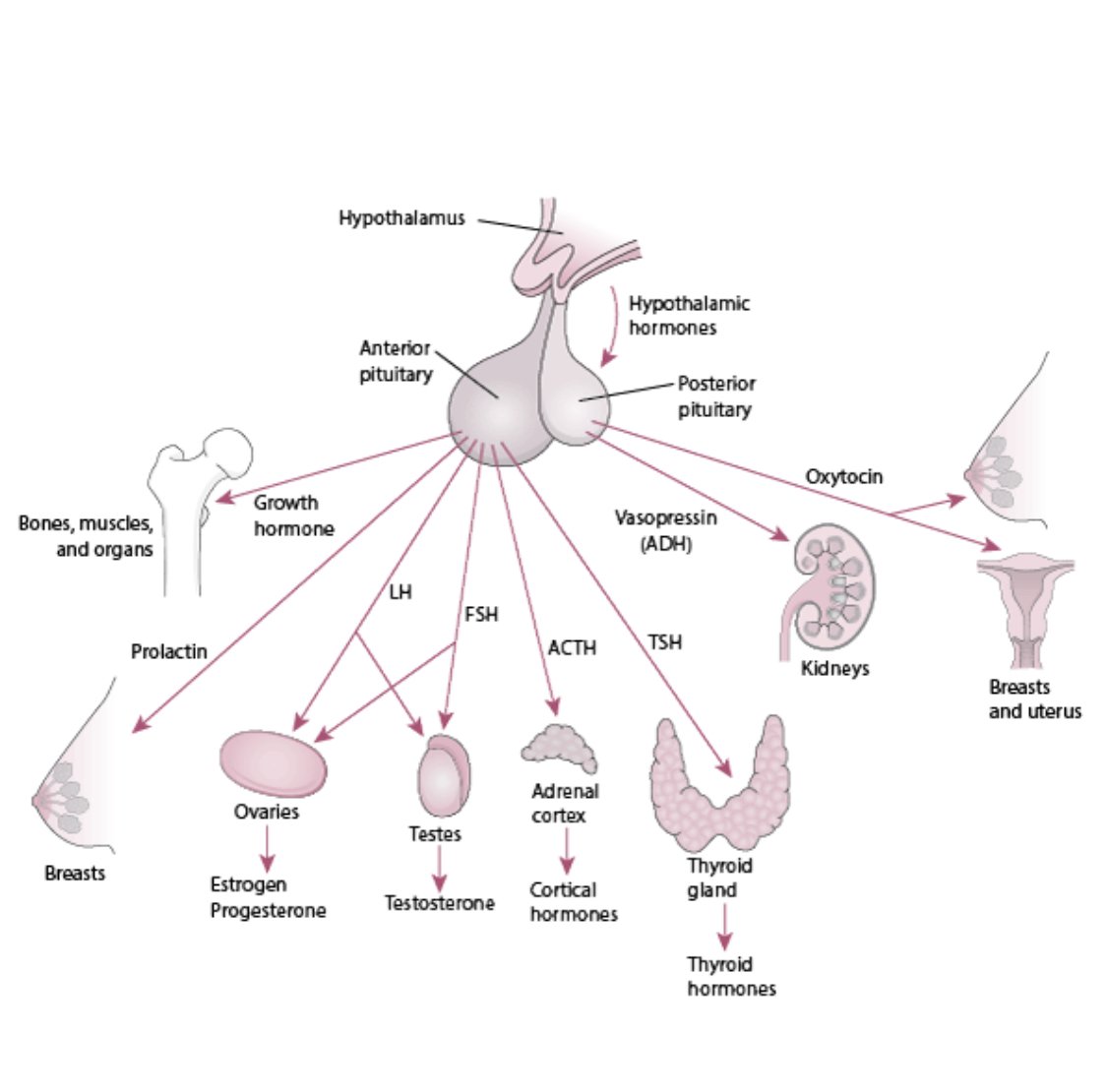
PITUITARY GLAND
Pituitary: The Master Gland
|
The pituitary, a pea-sized gland at the base of the brain, produces a number of hormones. Each of these hormones affects a specific part of the body (a target organ or tissue). Because the pituitary controls the function of most other endocrine glands, it is often called the master gland. It consists of two lobes; anterior and posterior lobe. Six important peptide hormones plus several hormones of lesser importance are secreted by the anterior pituitary, and two important peptide hormones are secreted by the posterior pituitary. These are as follows Hormones secreted by anterior pituitary
Hormones secreted by posterior pituitary
Relationship between hypothalamus and pituitary gland Hypothalamus and pituitary gland are primary endocrine glands of the human body. Hypothalamus is a small area of the brain, which is located under the thalamus. The pituitary gland is located just below hypothalamus. The hypothalamus is connected to the anterior lobe of the pituitary gland by means of a special portal blood system. Moreover, the hypothalamus is directly connected to the posterior lobe of the pituitary gland by means of neurons. Therefore, the hypothalamus regulates the function of the pituitary gland. This is the relationship between hypothalamus and pituitary gland. At the end of this lesson students should know about
|


